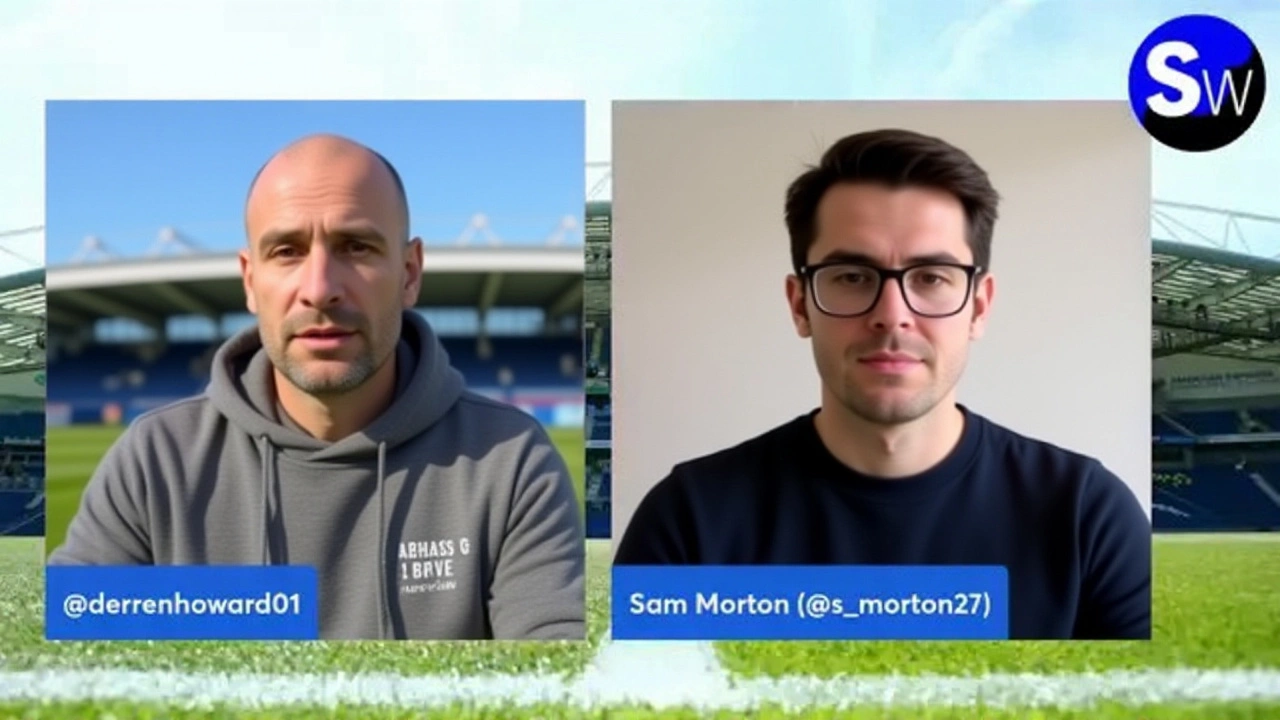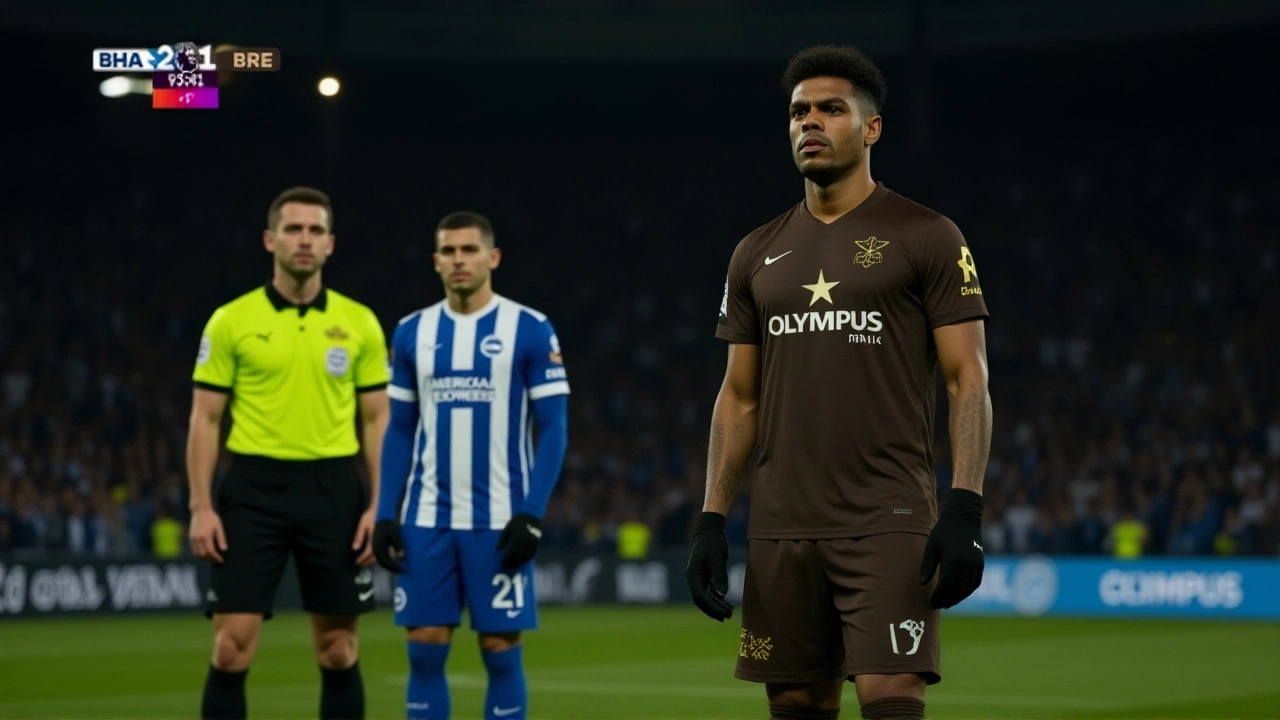
For a team that thrives on pace, unpredictability, and wing wizardry, Kaoru Mitoma’s absence is more than a tactical gap—it’s a silence in the noise. As of November 16, 2025, the Japanese forward remains officially OUT for Brighton & Hove Albion, with manager Fabian Hurzeler confirming the 28-year-old is still managing lingering pain despite a fully healed ankle. The earliest projected return? November 30, 2025. But Hurzeler’s tone suggests even that date isn’t set in stone. "It’s not an easy thing to predict," he said in his latest press briefing. "Everything is healed, so he should be fine. We just have to see how he can handle the pain." The injury, sustained just before the November international break, has cost Brighton crucial matches: the home clash against Manchester United on November 23 and the away fixture at Crystal Palace on November 24. Both games ended in narrow defeats, with Brighton failing to create the kind of fluid attacking moments Mitoma routinely generates. His dribbling, his sudden cuts, his ability to stretch defenses—these aren’t just skills. They’re the heartbeat of Hurzeler’s system. This isn’t the first time Brighton’s attack has stalled without him. Back in January 2024, during Mitoma’s absence for the Asian Cup, the Seagulls went goalless in three straight Premier League games—against West Ham, Wolverhampton, and Luton. Before that stretch, they’d only failed to score once in 18 matches. The pattern is unmistakable: when Mitoma’s on the pitch, Brighton scores. When he’s not, they struggle to find rhythm. Hurzeler, who took over from Roberto De Zerbi in the summer of 2024 after the Italian’s move to SSC Napoli, has inherited a team built around dynamic wingers. Mitoma, signed from Kawasaki Frontale in July 2022 for £3 million, quickly became the most dangerous player on the wings. His 2023-24 campaign—10 goals, 8 assists—was a revelation. Even in a season where Brighton finished ninth, he was the standout performer. The pain Mitoma is enduring now isn’t structural. It’s neurological, residual. His ankle ligaments are intact, the swelling gone, the scans clean. But the body remembers trauma. Every sprint, every cut, every twist still triggers discomfort. "He’s back on the pitch," Hurzeler noted last week. "Training hard. But pain doesn’t lie. And we won’t rush him back into a 90-minute Premier League match if he’s not fully ready." There’s more at stake than just points. Reports from Sky Sports suggest Mitoma has no intention of leaving Brighton in the summer, despite growing interest from clubs in the Bundesliga and Ligue 1. That loyalty matters. In a market where stars often chase bigger paychecks, Mitoma’s commitment to a club that gave him his European breakthrough is rare. He was born in Kawasaki, Kanagawa, Japan, on May 20, 1997, and his journey—from the J1 League to the Amex—has been one of quiet excellence. The Amex Stadium, with its 30,750 seats in Falmer, East Sussex, has become his second home. Fans here don’t just cheer for goals—they cheer for the way he moves. He doesn’t just run—he dances. He doesn’t just pass—he deceives. And without him, Brighton’s attacks feel mechanical. Hurzeler has tried alternatives: Moisés Caicedo dropping deeper to create, Yankuba Minteh pushing wide, even Lewis Dunk occasionally joining the attack. But none replicate Mitoma’s combination of low center of gravity, rapid acceleration, and instinctive awareness. The data tells the story: Brighton’s xG per game drops by 0.42 when he’s absent. That’s the difference between scoring two goals and scoring none. The club’s medical team, led by head physio Mark Dutton, has been working with Mitoma on neuro-muscular re-education drills, cold compression therapy, and controlled plyometrics. They’re not just healing tissue—they’re rewiring his nervous system to trust the joint again. "It’s not about strength," one insider told me. "It’s about confidence. He’s afraid to land wrong. That’s the real hurdle." If Mitoma returns on or before November 30, it’ll be against Tottenham Hotspur at home—a match that could define Brighton’s top-half ambitions. But if the pain flares again? The timeline could slip into December. And with the festive fixture congestion looming, every day matters. For now, Brighton fans hold their breath. They’ve seen this before. They know what’s missing. And they’re hoping, more than anything, that their little magician can find his way back to full speed—before the season slips away.
Why Mitoma’s Return Matters More Than Ever
Brighton’s 2024-25 campaign has been defined by resilience, not dominance. They’ve drawn with Arsenal, beaten Liverpool at home, and held Manchester City to a draw. But they’ve also lost to bottom-half sides when the spark isn’t there. Mitoma isn’t just a goal threat—he’s a catalyst. His presence opens space for Alexis Mac Allister, for Evan Ferguson, for the entire midfield to operate. Without him, the team plays too wide, too slow, too predictably. Opponents know where to crowd. They know where to press. And they’ve exploited it.Historical Context: When Mitoma Left, So Did the Goals
The 2023-24 season offered a chilling preview. After Mitoma missed five games due to the Asian Cup, Brighton’s attack went from averaging 1.8 goals per match to 0.7. In those five games, they won once, drew twice, lost twice. The contrast was stark. In the 18 matches before his absence, they’d scored in all but one. The numbers don’t lie: Kaoru Mitoma doesn’t just play for Brighton. He makes them dangerous.
What’s Next for Mitoma and Brighton?
The next 10 days are critical. Mitoma is expected to join full training by November 25. If he completes two consecutive 90-minute sessions without pain, Hurzeler will likely name him on the bench against Tottenham. A start? That depends on how he responds to the intensity. The club won’t risk a setback—especially with the January transfer window looming. But if he returns in time for the December 1 match against Everton, it could be the spark Brighton needs to climb into the top six.
Behind the Scenes: The Mental Game
Beyond the physical rehab, Mitoma has been working with Brighton’s sports psychologist, Dr. Eleanor Parkes, to rebuild his trust in his ankle. "He’s a perfectionist," Parkes told The Athletic in October. "He doesn’t want to be the reason they lose. That pressure? It’s heavier than any injury.Frequently Asked Questions
How does Mitoma’s absence affect Brighton’s chances of finishing in the top six?
Without Kaoru Mitoma, Brighton’s goal-scoring rate drops by nearly 25%, and their expected goals (xG) per game fall from 1.9 to 1.5. With 12 matches left and only a two-point cushion over seventh place, his return could be the difference between a top-six finish and a mid-table finish. Every goal he creates in the final stretch carries extra weight.
Why hasn’t Brighton signed a replacement winger despite Mitoma’s injury?
Brighton’s recruitment strategy prioritizes long-term fit over short-term fixes. They’ve opted to develop Yankuba Minteh and Evan Ferguson internally rather than spend on a winger who might not suit Hurzeler’s system. Plus, with Mitoma’s contract running until 2027 and no desire to leave, the club sees this as a temporary setback, not a structural problem.
What’s the risk of bringing Mitoma back too soon?
If Mitoma returns before full pain clearance, he risks aggravating the injury into a chronic issue—something that could sideline him for months next season. Brighton’s medical staff has seen this before: players who rush back from ankle injuries often suffer setbacks in the following campaign. Their priority is his long-term career, not just the next three games.
Has Mitoma ever missed a major tournament due to injury?
No. Mitoma played every minute of Japan’s 2024 Asian Cup campaign, despite a minor hamstring issue in the group stage. He was named in the tournament’s Team of the Week after his performance against Bahrain. His international reliability contrasts sharply with his club’s injury concerns, making his current absence even more concerning for Japanese fans.
How does Mitoma’s injury compare to past Brighton winger injuries?
Unlike Neal Maupay’s hamstring issues or Leandro Trossard’s knee problems, Mitoma’s injury is uniquely persistent because it’s not structural—it’s neurological. Previous injuries were physical and resolved with rest. This one requires mental retraining, which takes longer. No other Brighton winger in the last decade has had a recovery profile like this.
What’s the financial impact of Mitoma missing key matches?
Each Premier League win is worth roughly £1.8 million in broadcast and prize money. Missing two home games (vs. Man Utd and Spurs) and an away game (vs. Palace) could cost Brighton up to £5.4 million in revenue if they lose all three. Add in lost merchandise sales and sponsorship visibility tied to his global fanbase, and the total impact could exceed £7 million.
 Entertainment
Entertainment